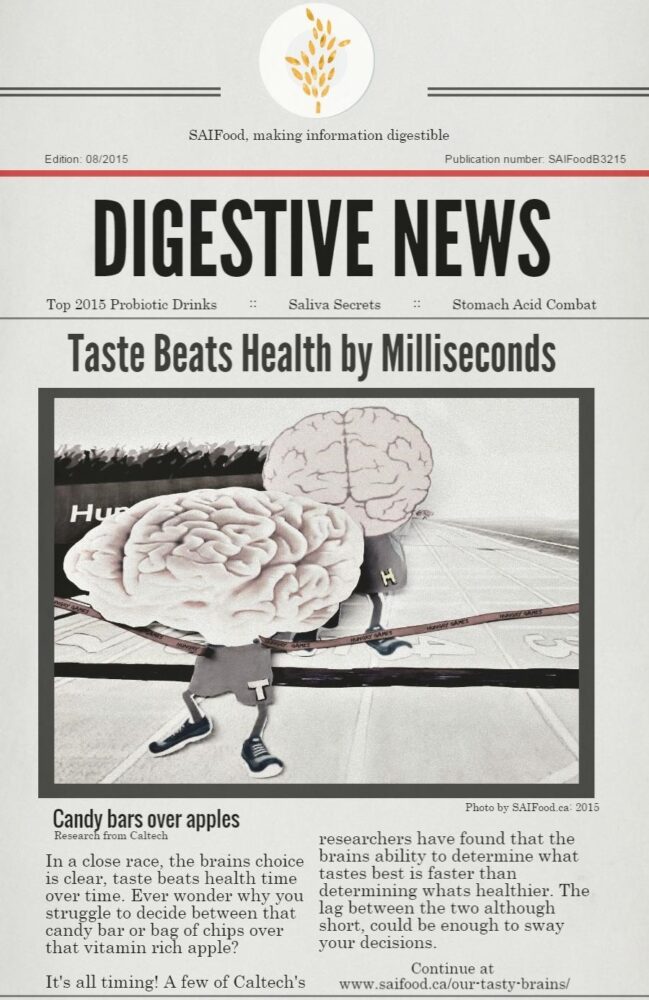Could our brains be wired for unhealthy food choices?
Last fall, I attended a behavioural economics conference in Denmark, where guest speaker Antonio Rangel, a professor at the California Institute of Technology (Caltech), discussed his results from a neurobiology and economic study on how people make value-based decisions. Dr. Rangel addressed a recent choice experiment involving Caltech students, who had to choose between products for health criteria and taste criteria. How often have you found yourself battling whether to eat the tastier food rather than the healthier option?
The experiment required participants to make two decisions between two sets of choices. In the first pairing of foods, the students were first
asked to choose which product would taste the best and then to pick the product that would be the healthiest choice. The first pairing of foods required choosing between Spam and brussel sprouts. Not surprisingly, the students chose Spam as tasting the best and the brussel sprouts as being the healthiest choice.
In the second half of the experiment, the same questions were asked, this time around the products were changed to a candy bar and an apple. When asked which of these two products would taste better, the majority chose the candy bar. Interestingly enough the response to which product would be healthier, an apple or a candy bar? The majority of responses indicated that the candy bar would be the healthier choice!
This healthy candy bar response astounded Dr. Rangel and the rest of his research team. During this experiment, Rangel and his team monitored the neurobiological responses of the students’ brains through sensors attached to their head, which measured the brain’s activity while making these decisions. This allowed them to look at the brain’s reactions as the students made the choice of a candy bar being a healthy decision, and what they discovered was quite amazing.
They found that the students brain made decisions for taste fractions of a second faster than it does for health. This meant that when the students were asked to choose between the candy bar and the apple, the brains decided based on taste rather than health. Essentially, the brain tricked the students into picking an unhealthy option as the healthy option.
This discovery is the first of its kind, and could explain why we sometimes struggle to choose a healthier option before a tastier one. Dr. Rangel suggested in his talk that their time gap discovery may help explain why North Americans have such a problem with being overweight. However, this requires further analysis and testing.
These results make me feel a little bit better about my own food choices. In part, we may be tricked into looking at a product and thinking that it is a healthy choice when the brain has made the decision based on how the product tastes. This is why we grab a chocolate bar or potato chips and believe that this is a healthy food choice to be making. It is too early to make any conclusions based on this, but it provides an incredible number of new research questions for those working in this field.
For more information about Dr. Rangel and his teams work, below are some varying articles which show their different studying on the taste vs health decisions.
- Self-Control in Decision-Making Involves Modulation of the vmPFC Valuation System
- Apple or Ice Cream? The Mechanics of a Healthy Choice, from Huffington Post
- Focusing Attention on the Health Aspects of Foods Changes Value Signals in vmPFC and Improves Dietary Choice, from the Journal of NeuroScience
- Dietary Self-Control Is Related to the Speed With Which Attributes of Healthfulness and Tastiness Are Processed, from Psychological Science


